- Cult List
- Posts
- Manage your meds on iPhone
Manage your meds on iPhone
Never miss a pill with help from Health app
Just about every time I am prescribed medications, I forget to take them.
I have several mostly-but-not-quite-empty pill bottles in our medicine cabinet as proof.
This all changed recently when I was prescribed three different medications and quickly got fed up manually setting up the repeating calendar events that I used to remind myself.
Luckily, there’s a little-known but super-great new medication management feature in your iPhone’s Health app.
It’ll not only remind you to take your meds — including on Apple Watch — it’ll warn you about potential drug interactions and more. And entering your medicines is as simple as scanning the label on the pill bottle.
It couldn’t be easier and works very well. See below for everything you need to know about managing your meds with the Health app.
— Leander Kahney, EIC.
A message from The Rundown AI
Start learning AI in 2025
Everyone talks about AI, but no one has the time to learn it. So, we found the easiest way to learn AI in as little time as possible: The Rundown AI.
It's a free AI newsletter that keeps you up-to-date on the latest AI news, and teaches you how to apply it in just 5 minutes a day.
Plus, complete the quiz after signing up and they’ll recommend the best AI tools, guides, and courses – tailored to your needs.
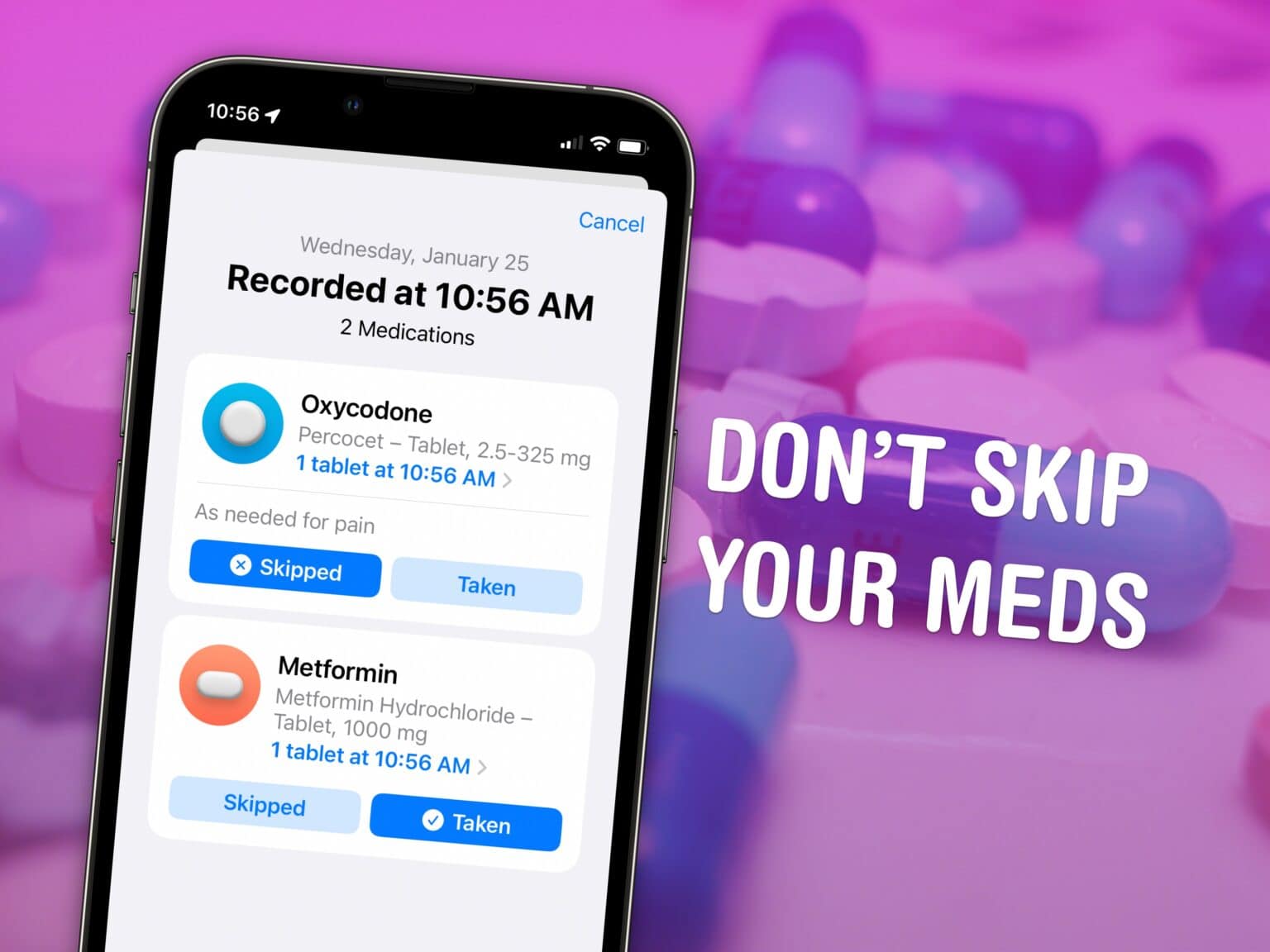
Your iPhone and Apple Watch can help you track your meds.
The Apple Health app on your iPhone will help you track your medications. It has a lot of advanced options for all kinds of medicine — you can set up schedules, log your activity and even get advice on drug interactions. If you can connect with your health care provider through the Health app, setting it up is incredibly simple. Otherwise, you can just scan the label on the bottle using the camera to import it.
Let me show you how to get started.
How to track medications on iPhone
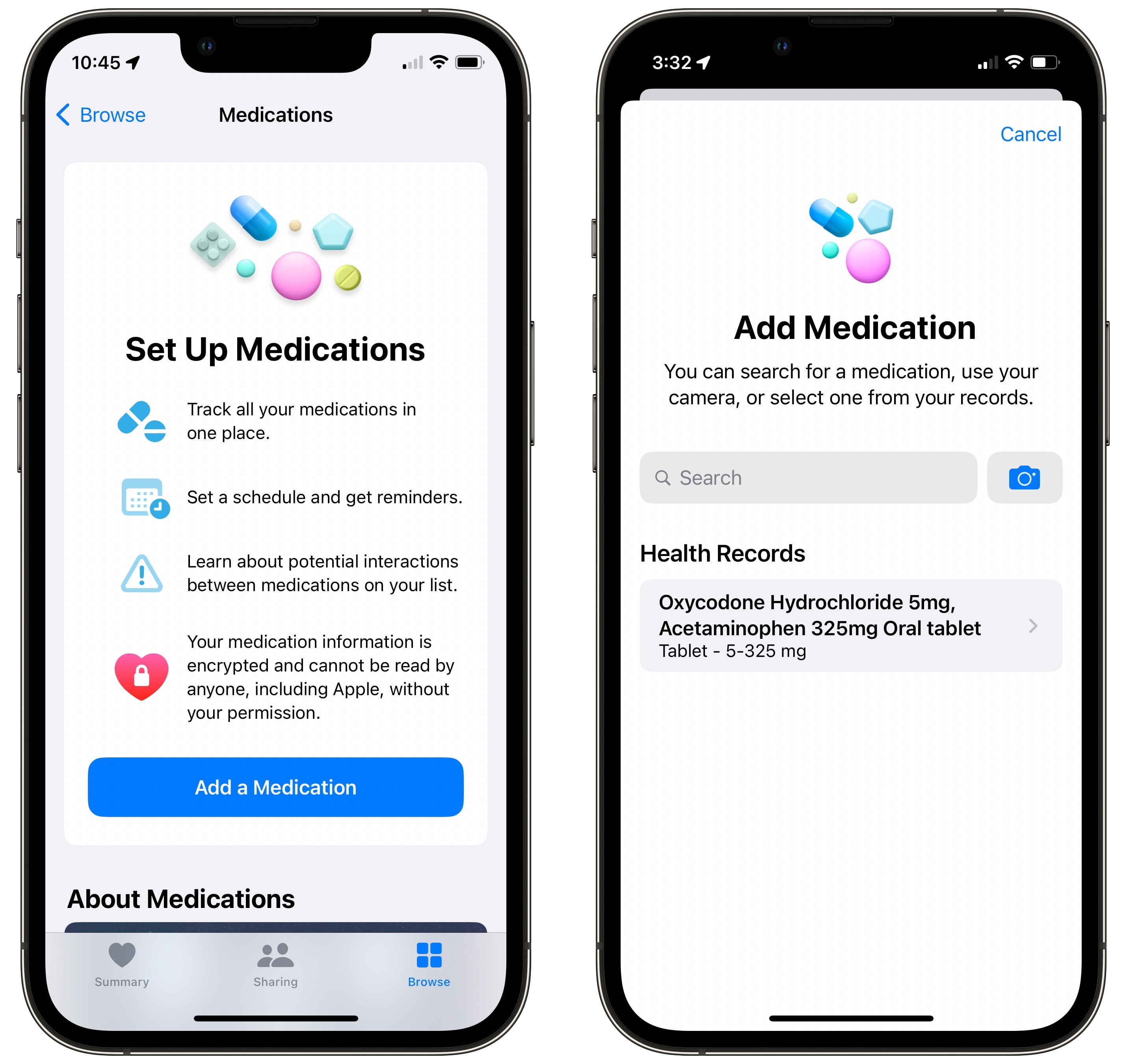
Add medications from the Health app.
To get started, open the Health app and tap the Browse tab at the bottom right. Scroll down to Medications and tap Add a Medication.
Add your prescription
If you have a connected health care provider, you can select a prescription from your records. You can also type it in to look it up or tap the camera icon to scan the bottle.
A message from ListKit
Cold Email Setup Offer
We started sending 10,000 cold emails per day, and scaled a brand new B2B offer to $108k MRR in 90 days. Now, you can have the same system set up (completely done-for-you) inside your own business - WITHOUT going to spam, spending thousands of dollars, or any manual input. Close your next 20 clients easily. We’ll set up the tech, write your scripts, give you the leads, give you the inboxes, and the sending tool - all starting at $500/mo.
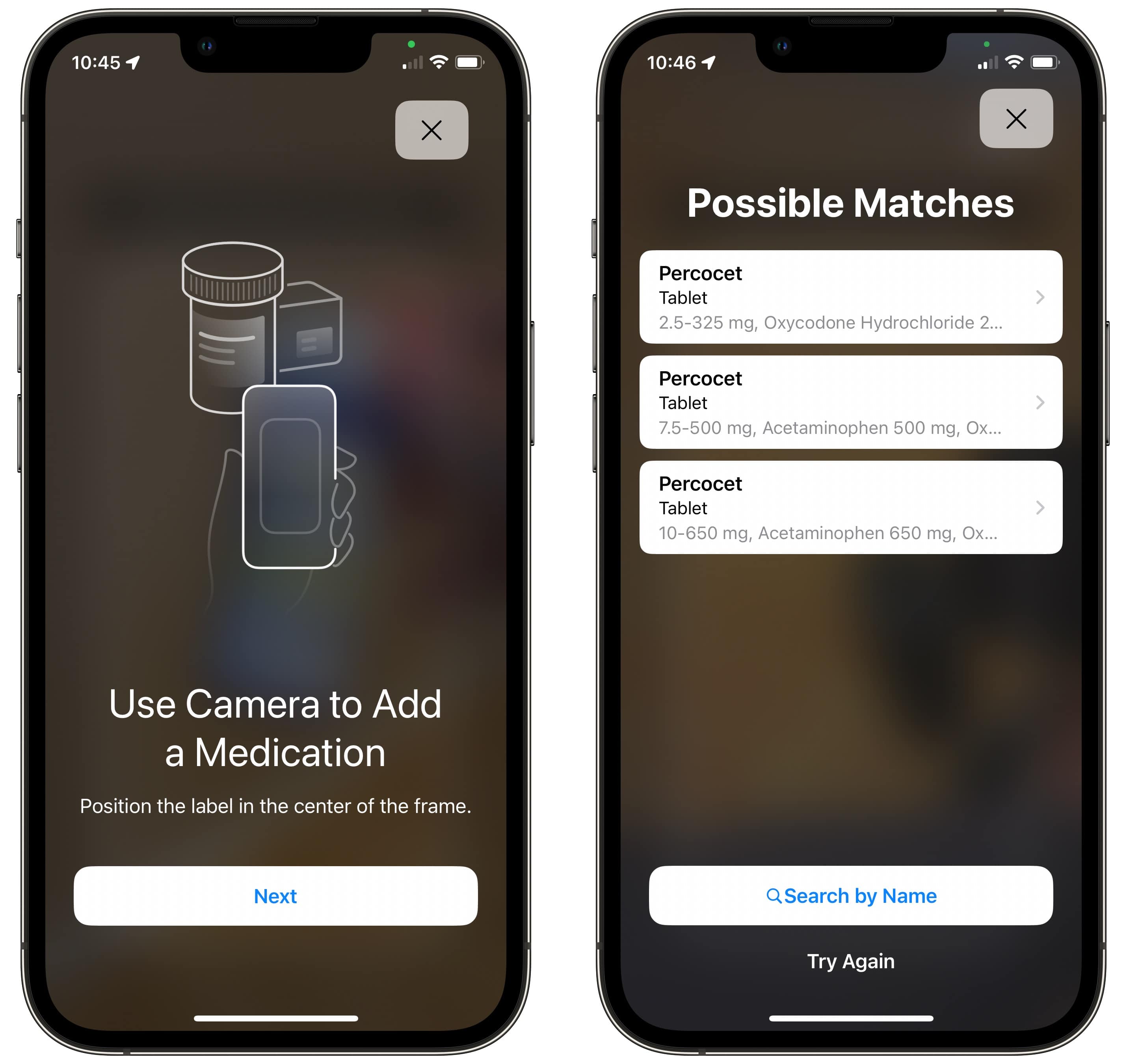
It’s a fast and easy way to import your medicine if you don’t have a connected health provider.
Tap Next to get started. Hold the bottle inside the square, holding it steady. You want to make sure the part of the label with the name of the drug is visible. It might present you with a couple different matches — make sure you select the right one.
You might need to answer a few questions based on the drug, like medication type or strength.
Set a reminder schedule

Make sure you set the schedule correctly.
Next, set up a schedule. Add a time of day and the dosage. Tap Add a time if you take it multiple times a day. Tap Frequency if you need to change it from Every Day to specific days of the week, a schedule of once every X days, or as needed. You can always go back and edit this later.
Pick an icon and color that will help you identify it.Screenshot: D. Griffin Jones/Cult of Mac
Next, you can choose a shape to help you recognize the medicine. There are all kinds of tablet shapes in addition to bottles, injections, needles, eyedroppers, powders and more.
You can pick a color for the medicine and a background color. (I recommend picking a background color that matches the container it’s in.) If you pick the old-fashioned two-piece capsule shape, you can pick a different color for the left and right side. What a time to be alive.
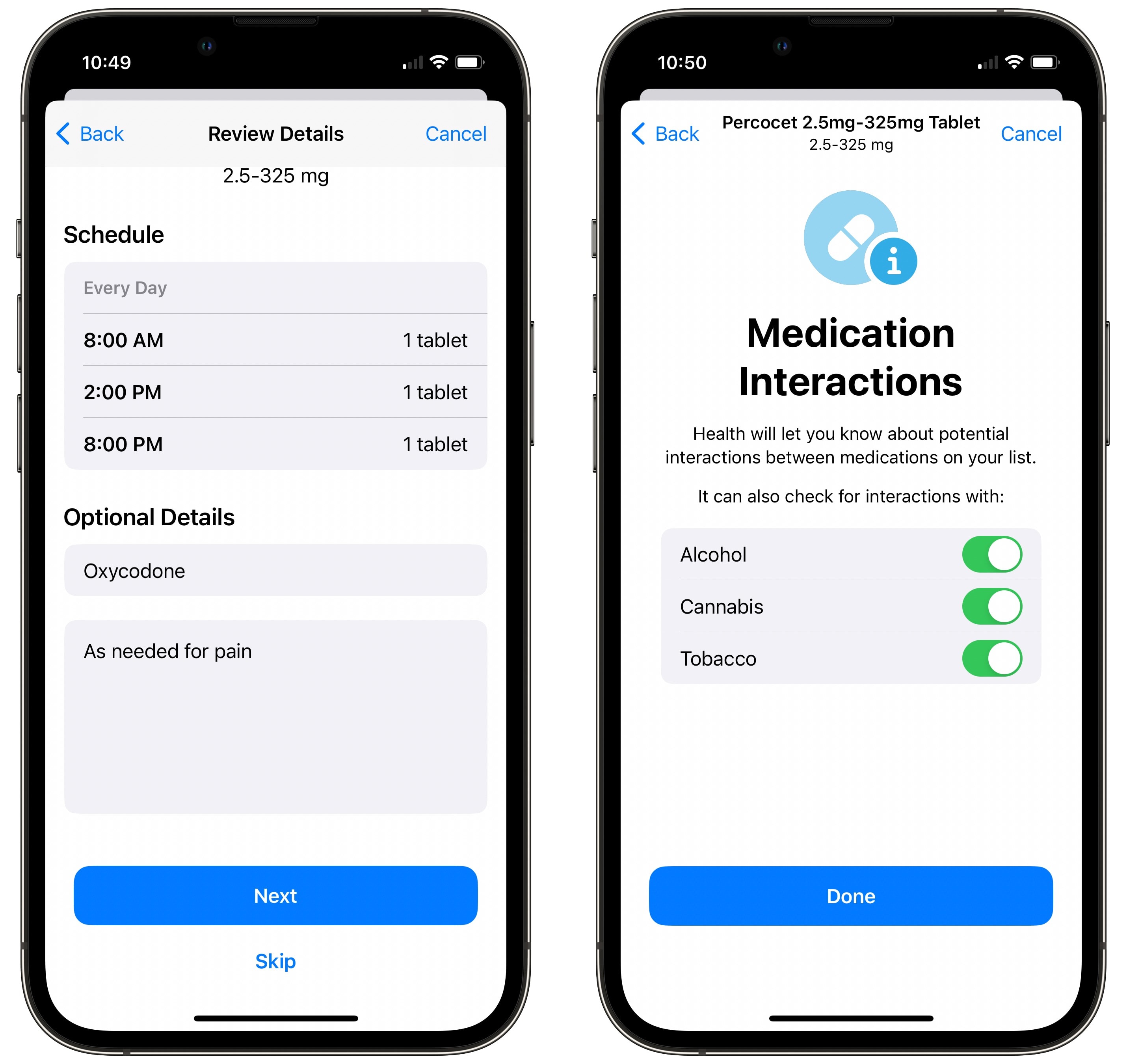
For the record, I don’t partake in any of the above (much less Percocet), but this is all for demonstration purposes.
Now, you can review the details. Give it a more descriptive name — if you have an off-brand drug, I recommend typing in here the name exactly as printed on the label to avoid confusion.
If this is your first time adding a medication, you’ll be asked whether you want to check for interactions with alcohol, cannabis or tobacco. Check these if you use them.
Track your medications and your log
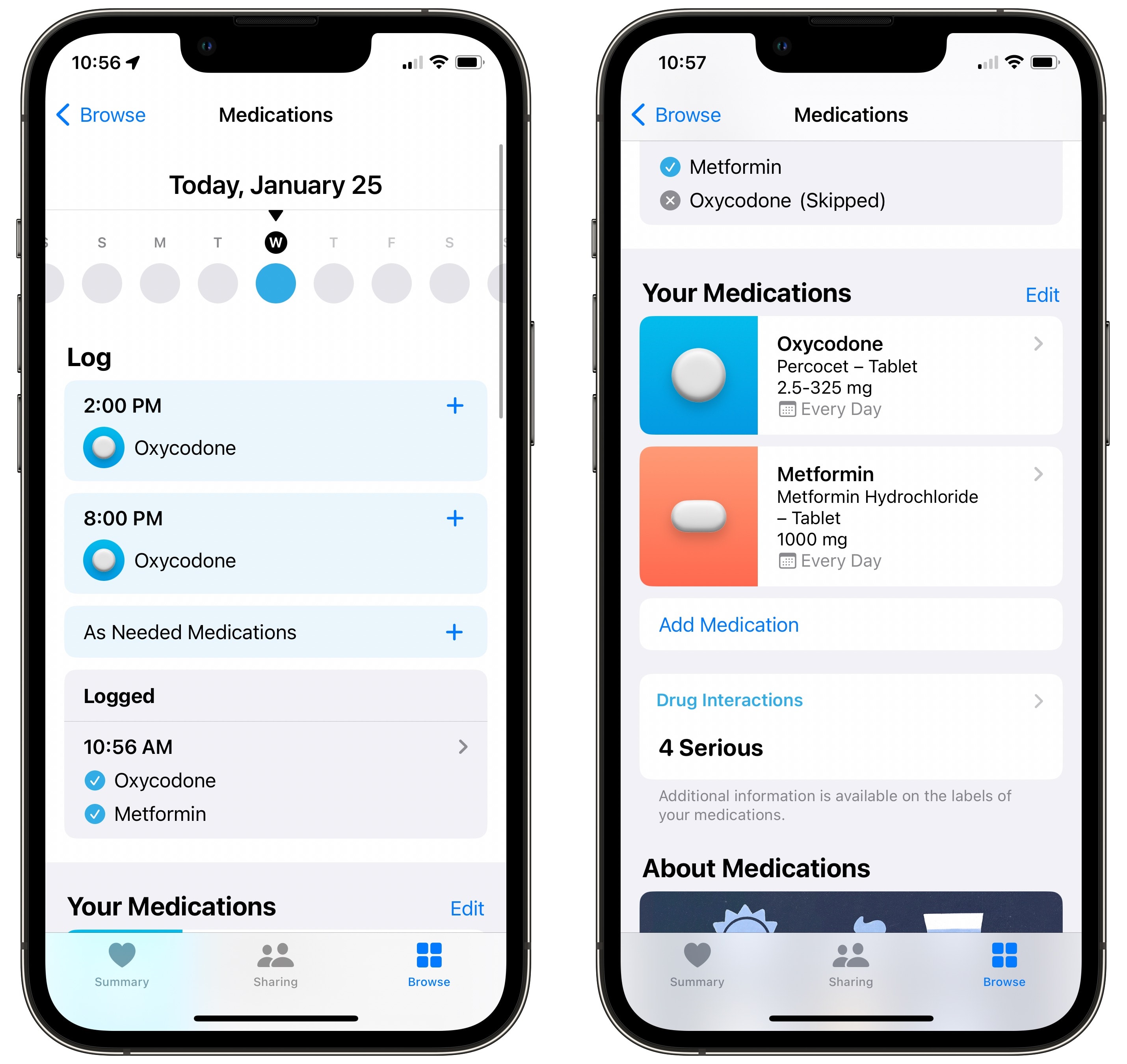
Browse the log and see active medications.
Finally, you’ll be taken back to the Medications screen. You’ll see a date picker along the top that you can scroll left and right to see your history or what’s coming up.
Scroll down and you can see the list of all your medications. Tap on any one of these to make changes to the schedule, dosage, icon, etc. Scroll down and tap Archive if you don’t take the drug any longer or Delete to completely remove it from your medical history (I don’t recommend doing this).
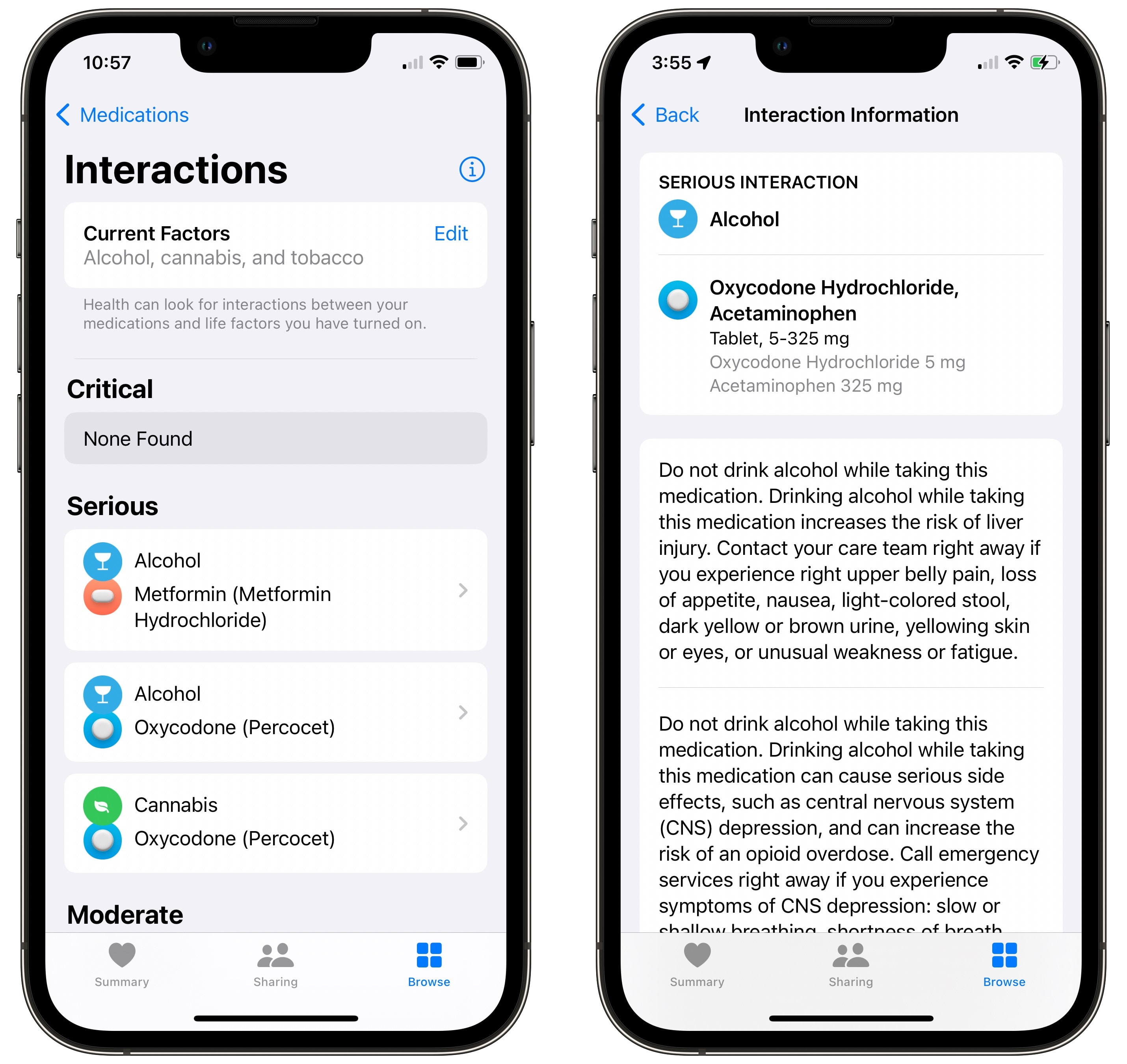
See what drug-drug interactions you have and read for more information.
Tap on Drug Interactions to see if there are any risks associated with your medications.
Get medication reminders
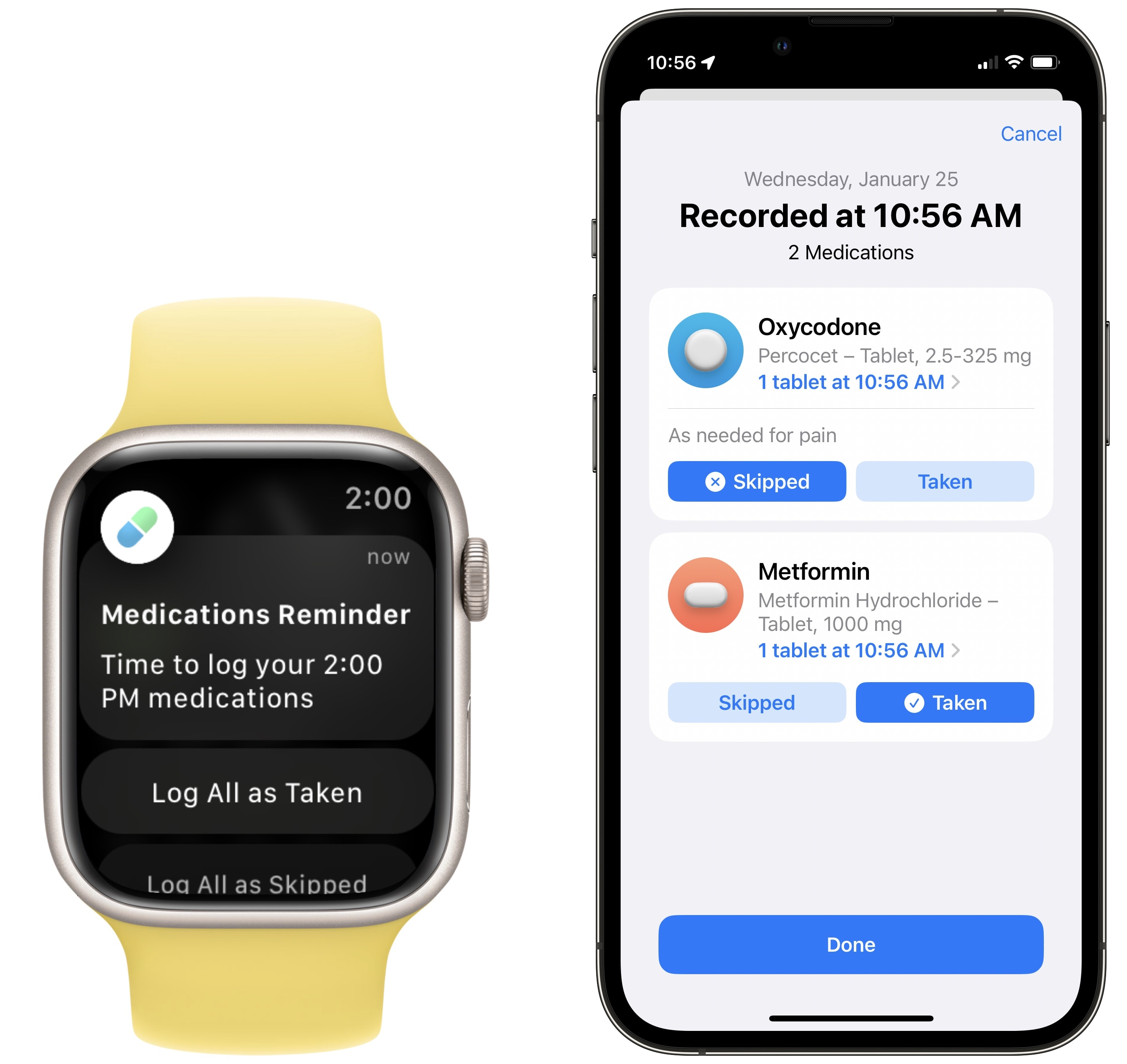
Record which you took and which you skipped on your schedule.
When it’s time for you to take your medication, you’ll get a push notification on your Apple Watch and iPhone. Tap Log All as Taken to mark them all as taken or tap Skipped to log that you didn’t take it. On your iPhone, make sure you tap Leave On on the notification to make sure you keep getting alerted to these.
How does it work?
I’m very impressed with how thoroughly Apple lets you track medications on your iPhone. Connecting to your healthcare provider, listing your prescriptions, scanning medication labels, the plethora of options for all the different types of medication — this is Apple at its best.
If there’s one weak link in the whole system, it’s the medication reminders themselves.
You have a lot of options on setting up complex schedules and times, but time-based reminders are your only choice. I’d like to see options that correlate with your sleep schedule for medication that needs taken right after or before going to bed. Other parts of iOS, like Focus modes or Reminders, have powerful tools for setting up notifications around arriving or leaving a location, opening certain apps, etc.
A bigger problem is that they’re presented as ordinary notifications. I carefully curate my notifications — most people don’t. I can easily foresee a situation where if someone doesn’t act on the notification immediately, it might as well be lost to time in the sea of crap accumulating in Notification Center.
If you are this type of person, I have a partial solution for you. Go to Settings > Notifications > Health > Banner Style and set it to Persistent. Best of luck.

